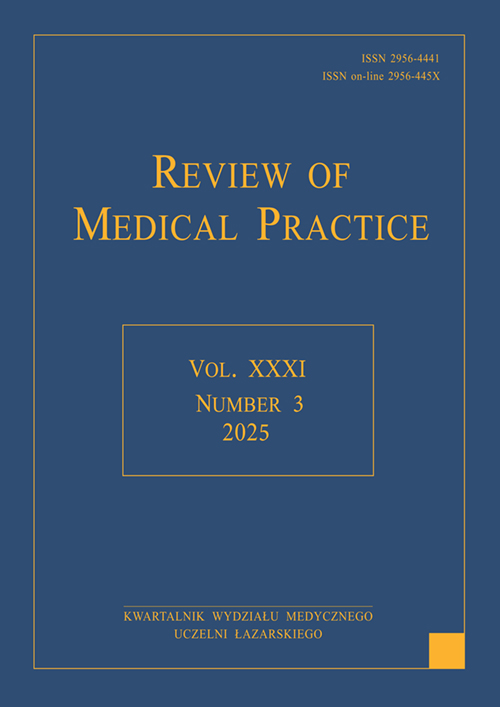Current Issue
Vol. 31 No. 3 (2025)
Published września 11, 2025
Review of Medical Practice
ISSN 2657-697X
The spectrum of interest of the journal includes original and clinical papers in the field of all medical sciences.
The Ministry of Education and Science awards 20 points for publication in the Review of Medical Practice (Announcement of the Minister of Education and Science of December 1, 2021 on the list of scientific journals and reviewed materials from international conferences).
Until the end of 2021, the journal was published under the title "International Review of Media Practice". Previous issues of the magazine are available on the website of the previous publisher link
The journal is indexed in the following databases:
EMBASE
Polish Medical Bibliography
Chemical Abstracts Service
Index Copernicus




